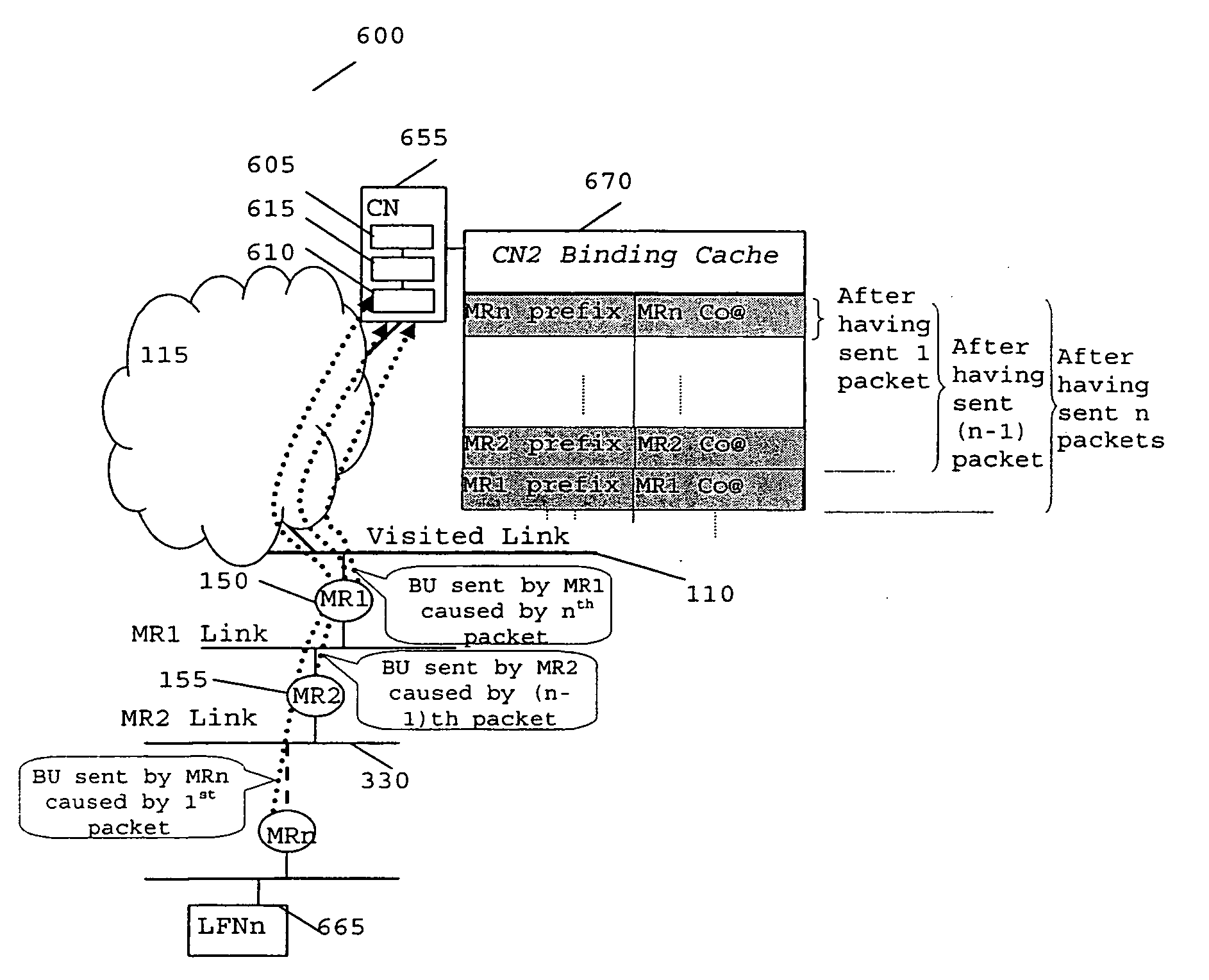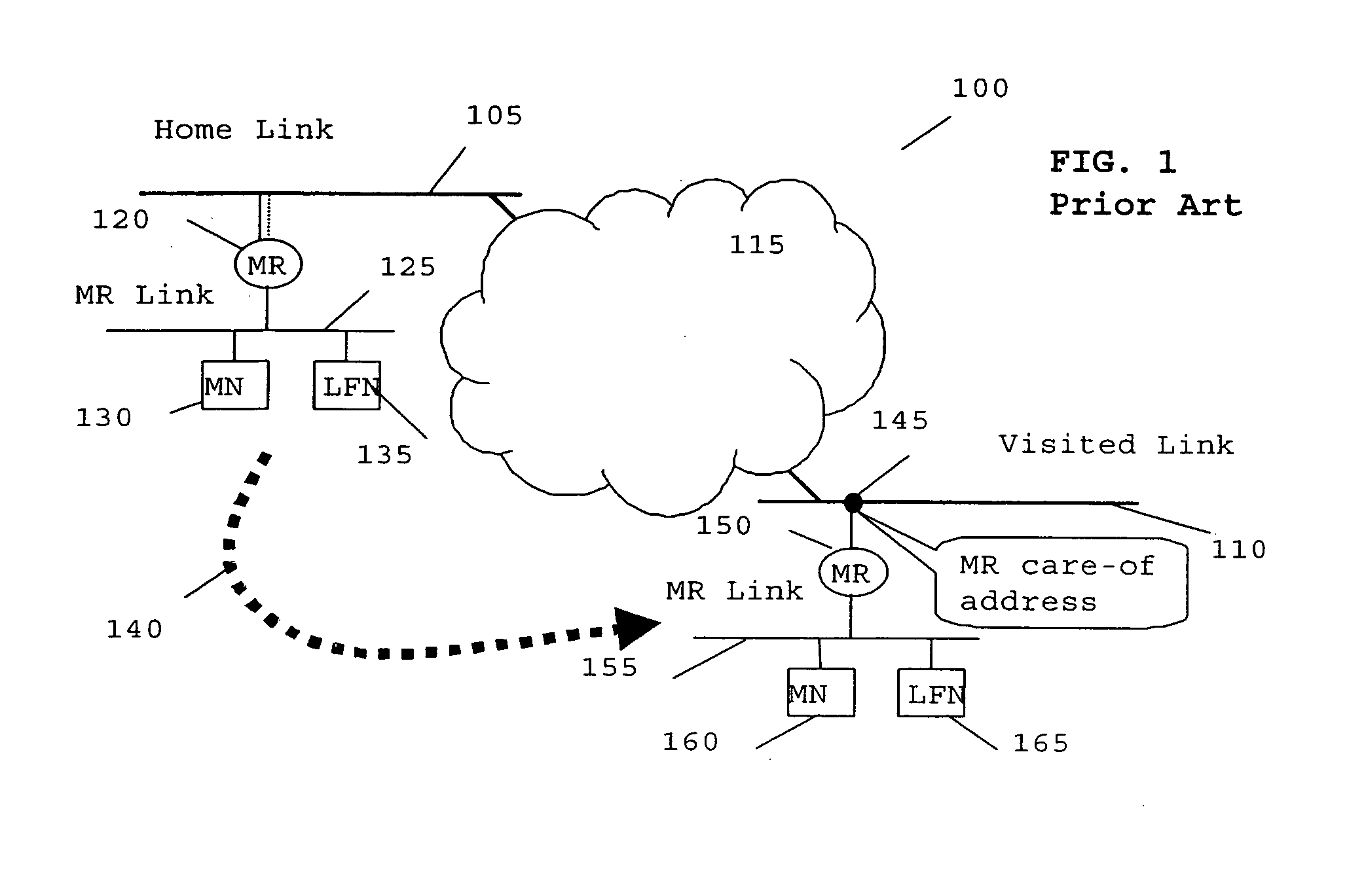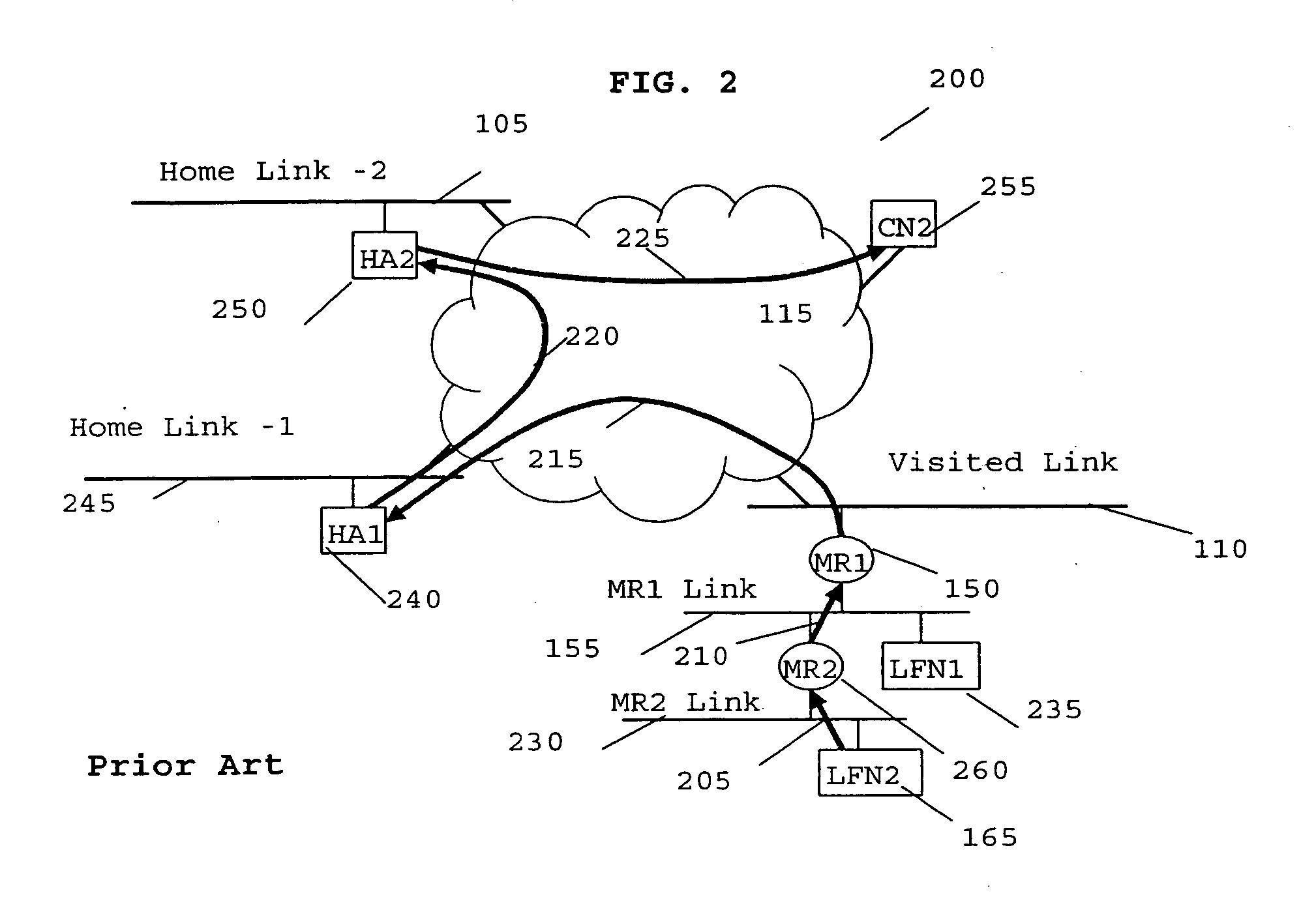Method and apparatus for route optimisation in nested mobile networks
a mobile network and route optimization technology, applied in the field of telecommunication systems, can solve problems such as exacerbated problems, ipv4 does not support route optimisation for mnns, and inability to know any, and achieve the effect of efficient suppor
- Summary
- Abstract
- Description
- Claims
- Application Information
AI Technical Summary
Benefits of technology
Problems solved by technology
Method used
Image
Examples
Embodiment Construction
[0073] There is currently no standard mechanism to support Network mobility adequately, particularly in the case of IPv6 for nested mobility data networks. In particular, there is no provision or support for route optimisation. This is a major issue, as nested mobility is a very realistic scenario for Mobile Router applications. In addition route optimisation is much more important with regard to movement of a Mobile Network, than for movement of a single Mobile Node, since the amount of traffic handled is much greater.
[0074] The preferred embodiment of the present invention is described with respect to route optimisation in transmitting at least one data packet between a corresponding node (communication unit) and a local fixed node (or vice versa). It is envisaged that the corresponding node may be any communication unit capable of sending a data packet across a data network (such as the Internet), for example, a web server, a PC, or a workstation running a web server such as www...
PUM
 Login to View More
Login to View More Abstract
Description
Claims
Application Information
 Login to View More
Login to View More - R&D
- Intellectual Property
- Life Sciences
- Materials
- Tech Scout
- Unparalleled Data Quality
- Higher Quality Content
- 60% Fewer Hallucinations
Browse by: Latest US Patents, China's latest patents, Technical Efficacy Thesaurus, Application Domain, Technology Topic, Popular Technical Reports.
© 2025 PatSnap. All rights reserved.Legal|Privacy policy|Modern Slavery Act Transparency Statement|Sitemap|About US| Contact US: help@patsnap.com



